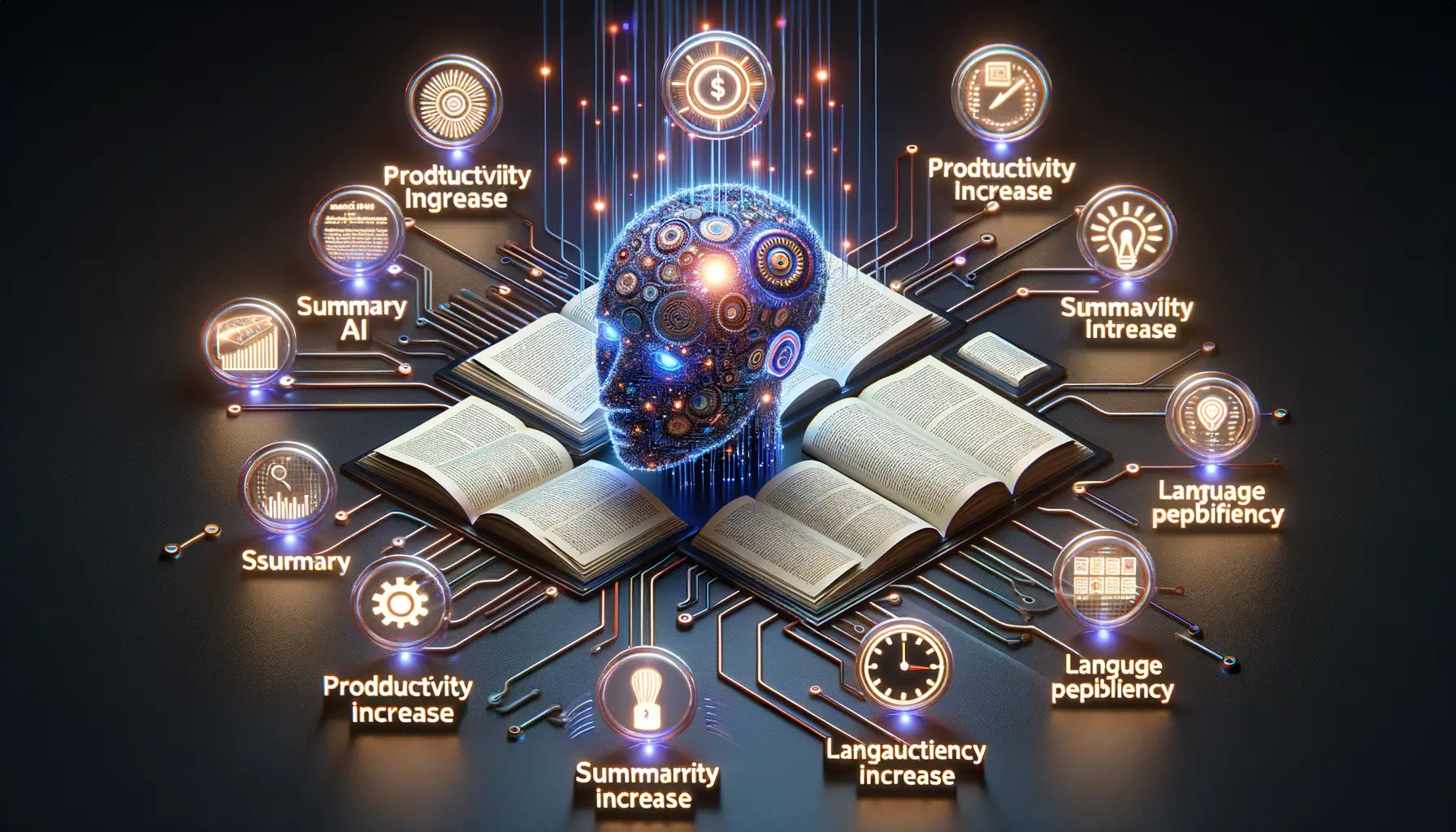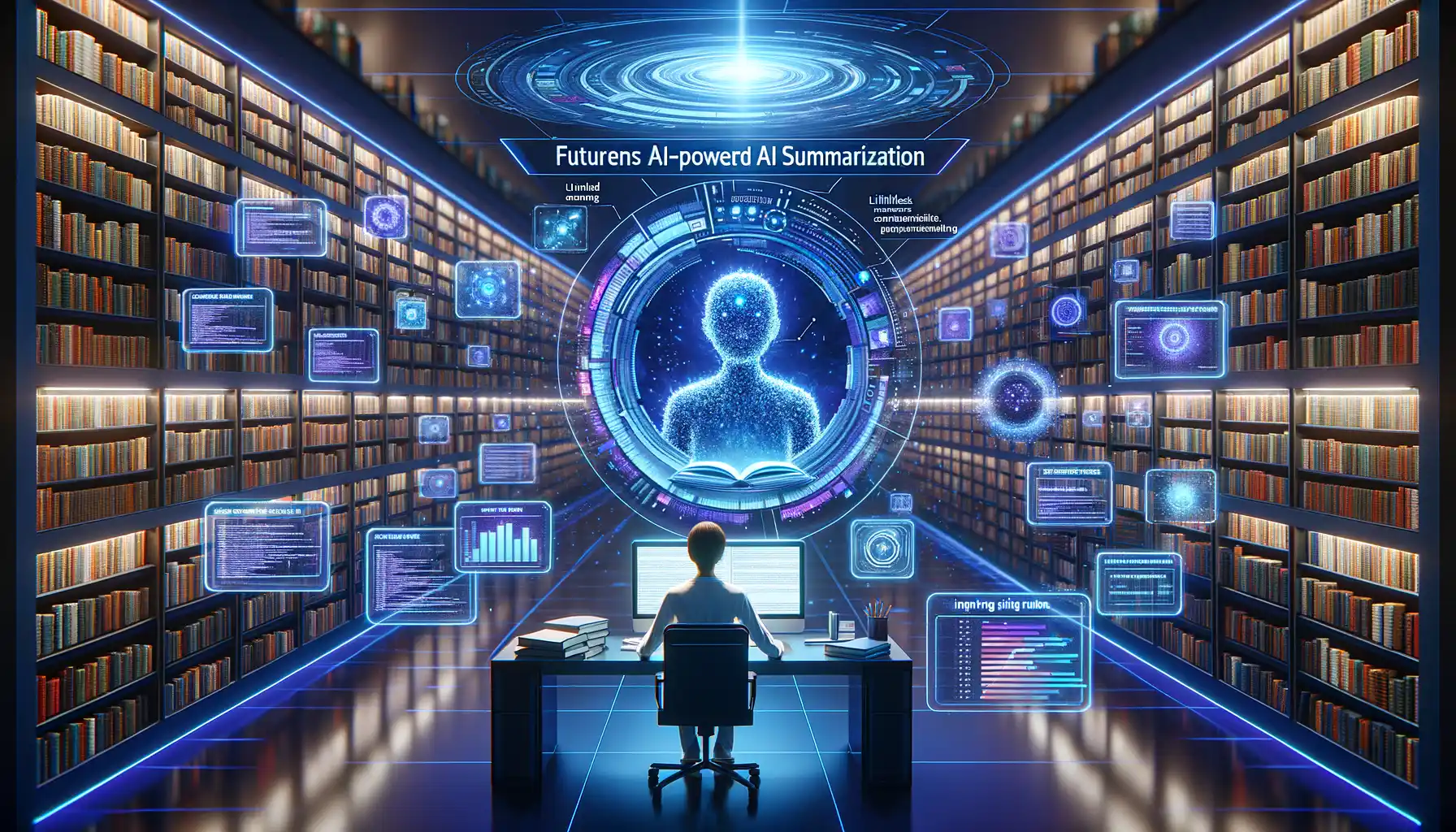Introduction to AI in News Article Summarization
Imagine this: you’re sifting through a mountain of breaking news, tabloids, and in-depth reports, trying to find the gist of it all. Exhausting, right? This is where AI-powered summarization tools swoop in like superheroes. They don’t just crunch text; they dissect it, analyze its essence, and serve you the juiciest parts on a silver platter. But how exactly does it work? Let’s unravel the magic.
The Secret Sauce of AI Summaries
The brilliance lies in AI’s ability to understand content beyond simple word matching. Using innovative models like Natural Language Processing (NLP), these digital marvels identify key ideas, connections, and even tone in an article—whether it’s a heated political op-ed or a feel-good feature about puppies saving lives. It’s a bit like having a librarian who knows exactly which chapters will leave you breathless.
Here are a few things today’s AI can tackle:
- Plucking out main points from lengthy, jargon-filled reports
- Rephrasing information into crisp, reader-friendly summaries
- Spotting biased language or inconsistencies in reporting
Why This Transformers Technology Matters
Some of the most cutting-edge systems, like OpenAI’s GPT models, rely on what’s called “transformers.” Think of them as the Sherlock Holmes of data—they detect patterns and relationships that would fly under the radar for most people. Suddenly, that 10,000-word investigative piece becomes a digestible snack of insight, perfect for readers with tight schedules or short attention spans.
Honestly, it’s not just helpful—it’s kind of revolutionary when you think about how overwhelming today’s information overload can be. With AI stepping in, news consumption regains its simplicity without sacrificing substance. It’s as though your favorite editor is whispering the highlights in your ear.
Key Technologies Behind AI Summarization

Breaking Down the Tech Magic
Imagine unraveling a dense article into a bite-sized, perfectly-crafted summary—it feels like AI is reading your mind, right? But behind this seemingly effortless process lies an orchestra of cutting-edge technologies working in harmony.
At the heart of it all is Natural Language Processing (NLP). Think of NLP as the mastermind that enables machines to understand human language: tone, intent, and even context. It’s like teaching your dog not just to fetch a ball, but to differentiate between “ball” and “bowl.” This is how AI distinguishes what’s headline-worthy in an article versus mere fluff.
But here’s where it gets even cooler: Meet transformer models—yes, that’s their actual name! These are like super-smart librarians flipping through pages, pinpointing the most relevant phrases while leaving unnecessary details behind. Ever heard of GPT or BERT? They’re some of the brainiest members of this tech family.
It’s like having an army of editors who never need coffee breaks. Fascinating, isn’t it?
Practical Applications of AI in Newsrooms

Transforming Daily News Production with AI
Imagine stepping into a bustling newsroom where deadlines loom large, and the clock ticks fast. In this high-pressure world, AI-driven tools are becoming the heroes journalists never knew they needed. These digital sidekicks handle tasks that once devoured hours of a reporter’s precious time, leaving more room for creative storytelling.
One standout use? Summarizing long press releases or breaking news feeds. Instead of drowning in walls of text, editors can rely on AI-powered extractive summarization to distill key details into crisp paragraphs. It’s like having an intern who works at lightning speed but requires zero coffee breaks. Genius, right?
And let’s talk about real-time coverage. During events like elections or natural disasters, these smart systems scan updates from multiple sources, pumping out condensed reports that allow journalists to stay one step ahead of the chaos.
- Tracking live trends on social media? Check.
- Auto-generating briefings for editorial meetings? Double-check.
- Summarizing global news for multilingual audiences? Absolutely.
The impact is huge—and it’s not just efficiency. With less time spent sifting through mountains of information, journalists can focus on what truly matters: crafting the stories that inform, inspire, and shape our world.
Benefits of Using AI for Article Summaries

Speed, Precision, and Peace of Mind
Imagine this: a journalist juggling deadlines or a reader drowning in an avalanche of breaking news. Enter AI for article summaries, your swift and tireless ally. The first gift it brings? **Time-saving brilliance**. Instead of wading through hundreds of paragraphs, you get the crux in seconds. For busy professionals, this can feel like reclaiming stolen hours.
Not to mention the sheer **precision**. AI doesn’t miss key points or get distracted by flashy but irrelevant details. Think of it as your personal editor with laser focus. Whether you’re dissecting a dense scientific report or catching up on political trends, AI ensures you don’t skim past anything crucial.
- Accessibility: Complex stories simplified for everyone.
- Customization: Summaries tailored to specific interests.
- Consistency: Delivering high quality every single time.
Human + Machine = The Perfect Duo
The real magic happens when we pair human creativity with AI’s efficiency. It’s not about replacing people; it’s about unleashing their potential. With AI covering repetitive tasks, journalists can focus on crafting stories that resonate. Readers, on the other hand, are empowered—with concise insights, they stay informed without feeling overwhelmed. It’s a win-win, every step of the way!
Future Trends in AI-Powered Summarization

The Evolution of AI Summarization: What’s Next?
Imagine AI so fine-tuned it feels like your personal editor, handing you article insights on a silver platter. That’s where we’re headed—toward a future where AI-powered summarization does more than skim the surface; it dives deep into nuance, tone, and context.
One standout trend is the rise of customized summaries. Algorithms will soon adapt to your preferences, whether you’re a casual reader who loves bite-sized takeaways or a journalist hungry for specifics. Think of it as an espresso shot versus a slow brew—it’s all tailored to your reading “taste.”
Another exciting development? Enhanced multilingual capabilities. As AI learns to truly grasp cultural subtleties, expect smooth, meaningful translations across languages. No more robotic wording or awkward phrasing—just clean, culturally aware summaries that bridge global audiences.
- Video and audio summarization: AI won’t stop at text. Imagine a news video condensed into a short watchable clip, or podcasts distilled into key points.
- Emotion-aware analysis: Future AI could parse not just information but emotional undertones, making summaries more impactful and human-like.
These innovations aren’t just upgrades—they’re revolutionizing how we consume information in ways we couldn’t have imagined just a decade ago. Who’s ready to embrace that future?
